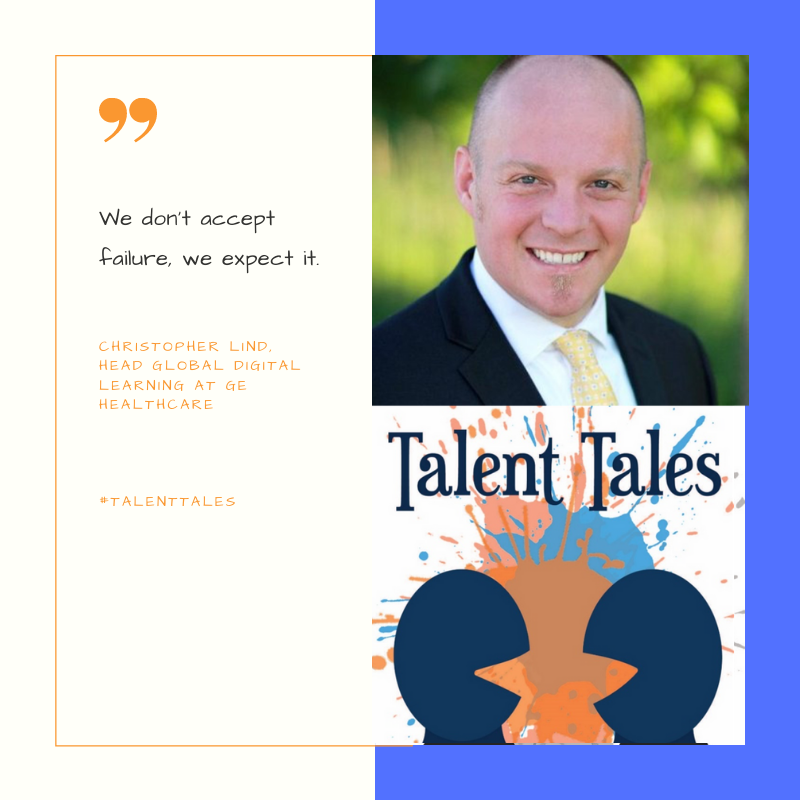In this Talent Tales episode, talent.imperative Founder Nicole Dessain had the honor to interview Christopher Lind, Head of Global Digital Learning at GE Healthcare.
Christopher’s creative superpower is to take complicated or fragmented topics and make sense of them for others. He models this in his own podcast show, Learning Tech Talks. [Note: Our very own, Nicole Dessain, recently had the honor to be on Christopher’s show. Check out the episode here.]
Christopher is a self-proclaimed people development geek who has always been fascinated by technology’s possibilities in support of learning.
Christopher started his career in the software development world. That’s where he was first exposed to design thinking. What bothered him at that point was that it didn’t seem to be applied in a truly human-centered way – release dates and requirement targets seemed to take precedent over user needs and wants.
In his own design thinking practice, Christopher is drawn to the empathy aspect of the method. He aims to “move slow to move fast” in really trying to understand what challenges the end user might be facing before jumping to solutions. He is also a fan of quick prototyping and iterating instead of spending months designing a solution that might miss the mark.
Christopher recently applied human-centered design to a project where the sales organization wanted to analyze how augmented reality might be used to help explain and present their more complex products.
Christopher started by opening the ideation with: “What could we do if anything was possible?” After that initial exploration, the team concluded that augmented reality was indeed a viable opportunity to explore. However, their initial prototype failed due to the complexity of the method and vendor involvement. But instead of abandoning the entire project, the team assessed what they might learn from this experience and how the prototype needed to be modified to be successful. In the end, and after multiple tests, the conclusion was made to use natural language processing to analyze feedback.
To build an environment that was receptive to the concept of “failing forward”, Christopher used storytelling. He shared his vision of where he wanted to go and how he wanted to get there. That created initial enthusiasm. Another way he gained buy-in was to create a budget line item “incubator” which was explicitly dedicated to fund experimental projects. He then made it clear that he expected failure to be integral to the work on those projects. This approach helped to normalize that learning from failure was an accepted part of the culture. It also encouraged employees to freely share their ideas resulting in surfacing untapped creativity.
The biggest impact Christopher has seen from applying a human-centered design approach has been getting feedback from the end users who felt that the solutions created helped them be better at their job.
Want to learn more about brain vomit? Watch the entire interview on YouTube or listen to the Podcast.


